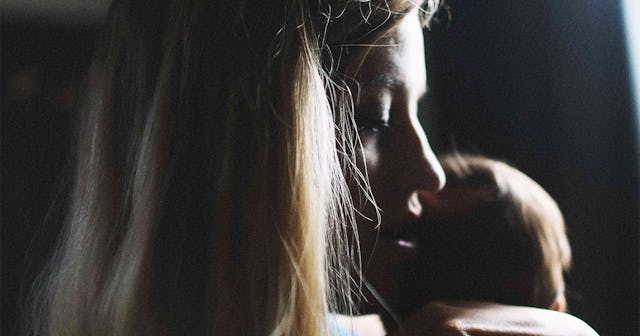'Maternity Homes' Still Exist––Then vs. Now

Spending all day on the internet—mostly for work—means I stumble across a lot of personal stories. Not all of them are memorable, but Denny and Karen Vinar’s story was, and it took me down a rabbit hole. In 1961, Denny and Karen were teenage sweethearts; they were in love and living their best teenage lives until the two conceived a child. Karen’s parents sent Karen to a home for unwed mothers, known as a maternity home, where Karen stayed until her baby was born and given up for adoption. Denny was able to visit a couple of times and got to meet their daughter on the day she was born. Shortly afterward, Denny went off to the military; when he came back he proposed to Karen, who said yes, but her parents didn’t approve. Denny and Karen went their separate ways (and Karen’s parents can fuck off).
53 years later, Denny and Karen reunited, got married, and found their daughter by using Lutheran Social Services. Why this hasn’t been made into a podcast yet is beyond me, but the part of the story that kept nagging at me was the fact that mothers and children were hidden from society and forcibly separated from one another. 1961 wasn’t that long ago. How common was this? Do these homes still exist today?
In her heartbreaking book “The Girls Who Went Away,” author Ann Fessler recounts stories of mostly middle-class, white teens and women who were shamed into maternity homes. In the 20 years before abortion became legal, nearly 1.5 million unwed mothers were forced to have their babies and then give them up for adoption. Families were ashamed of their “morally corrupt” and “sinful” daughters who became pregnant out of wedlock—never mind the fact that men didn’t get punished for their part in the pregnancy—but in the 1950s medical professionals claimed that unwed mothers were psychologically unfit to raise children, so their children should be taken away.
By the mid-1960s, more than 80 percent of women who entered maternity homes surrendered their babies for adoption after being brainwashed by social workers, parents, and court rulings that it was the best thing for both them and their child. And because our systems were (and still are) racist AF, unwed Black mothers weren’t sent away because they were expected to be more “promiscuous” and were assumed to be more maternal. Also, social workers told both Black and white unwed mothers that no one wanted to adopt Black babies. All mothers were being fucked over, just for different reasons.
Sharon McCutcheon/Unsplash
Today more places acknowledge all gender identities of folks who have a uterus and the ability to get pregnant, but most conversations about reproductive rights center cisgender women. The focus has been on cis women here, but transgender men and nonbinary folks face similar issues. Even with ruling of Roe V. Wade, the ability for a woman to make choices about birth control, pregnancy, abortion and anything that has to do her body is either governed by someone else (usually a cisgender man) or met with stigma. Instead of being supported, women are often shamed and forced into decisions that are not based on her actual needs and wants.
Maternity homes still exist, but are thankfully used more now as a refuge and alternative to unsafe or unwelcoming homes. Maternity homes across the country offer shelter, food, and support to teens and women who may or may not choose to keep their babies, but the choice is up to them. Because many of these homes are faith-based, the choice to have an abortion is often off of the table, though. These homes are meant to protect, inform, and guide women through the process of either raising their child or finding the best home for them through adoption. Homes like LifeHouse of Houston offer labor and delivery classes, financial planning, and job training skills. The daily structure can be rigid and often includes religious foundations, but women choosing to go into these homes at least know what they are signing up for. There are 20 maternity homes in Texas and roughly 350 across the country, and many have long waiting lists.
While women may have more autonomy now than in the 1960s, the fact that there are waiting lists at homes for pregnant women is a testament to how society is still failing women and teens. Sexual education is a joke in the United States. Only 30 states plus the District of Columbia mandate sex ed in schools and the information that students are given vs. what they should be taught leaves a lot to be desired. Abstinence is often stressed, consent is not discussed with much or any nuance, and only 11 states offer sex ed that is LGBTQIA+ inclusive. The CDC reports that teen pregnancy rates in the United States are dropping but are still significantly higher compared to other developed countries. The racial and economic disparities in teen birth rates continue to persist.
No expectant parent should feel helpless, shamed, or forced to make a decision about their child because they don’t have familial support or societal systems that provide equitable opportunities. Maternity homes never should have existed for their original purpose and it’s just as frustrating that these homes are still in use even if for more charitable reasons. Stigma, religion, and racism still hold uteruses hostage.
I’m glad Denny and Karen’s story had a happy ending, including the reunion with their daughter. But so much pain and trauma could have been avoided if Karen’s body and autonomy had been respected. A pregnant person should have clear and safe choices when deciding the best path forward to parenthood; the same is true if becoming a parent is not what a person wants. These decisions are personal and shouldn’t be up for debate.
This article was originally published on